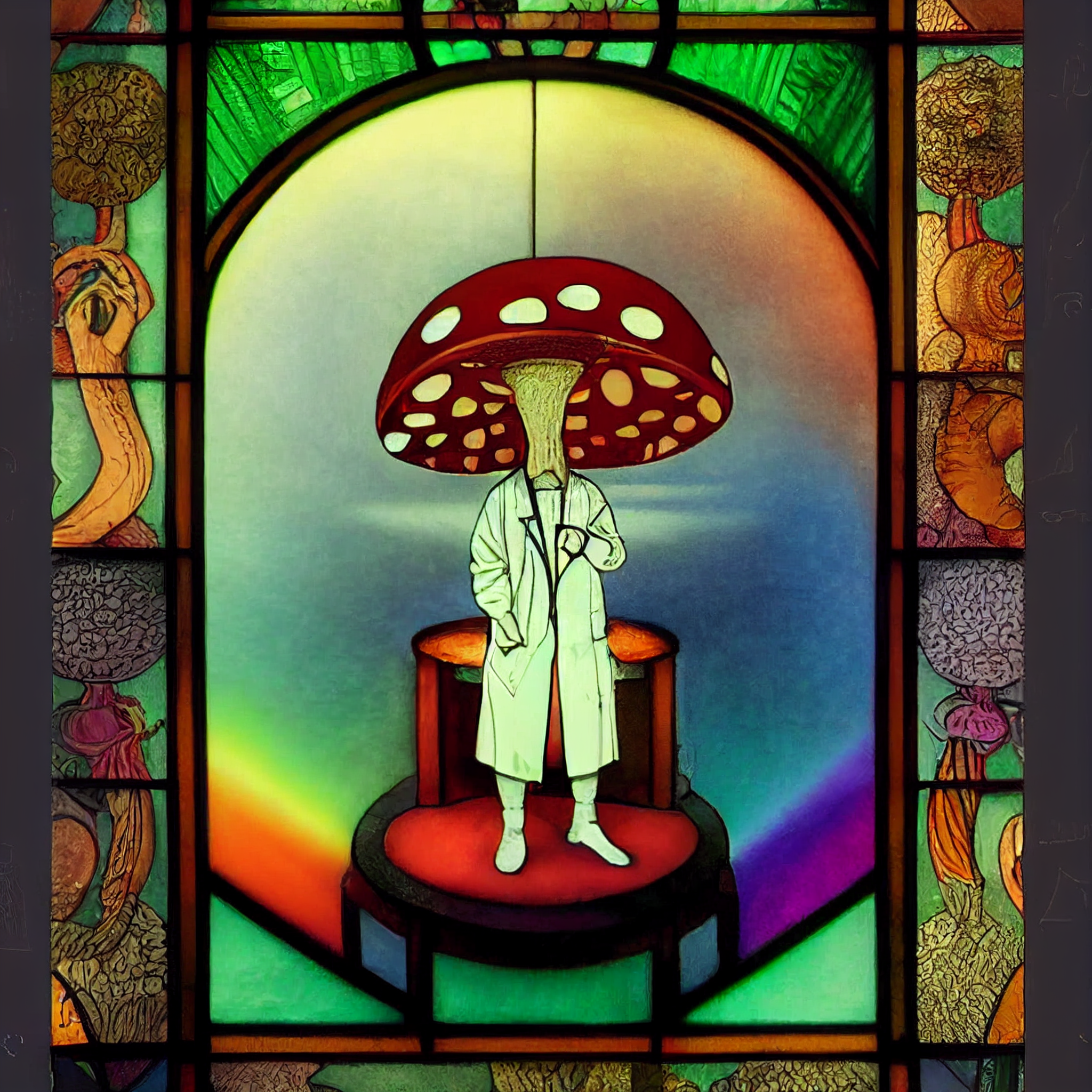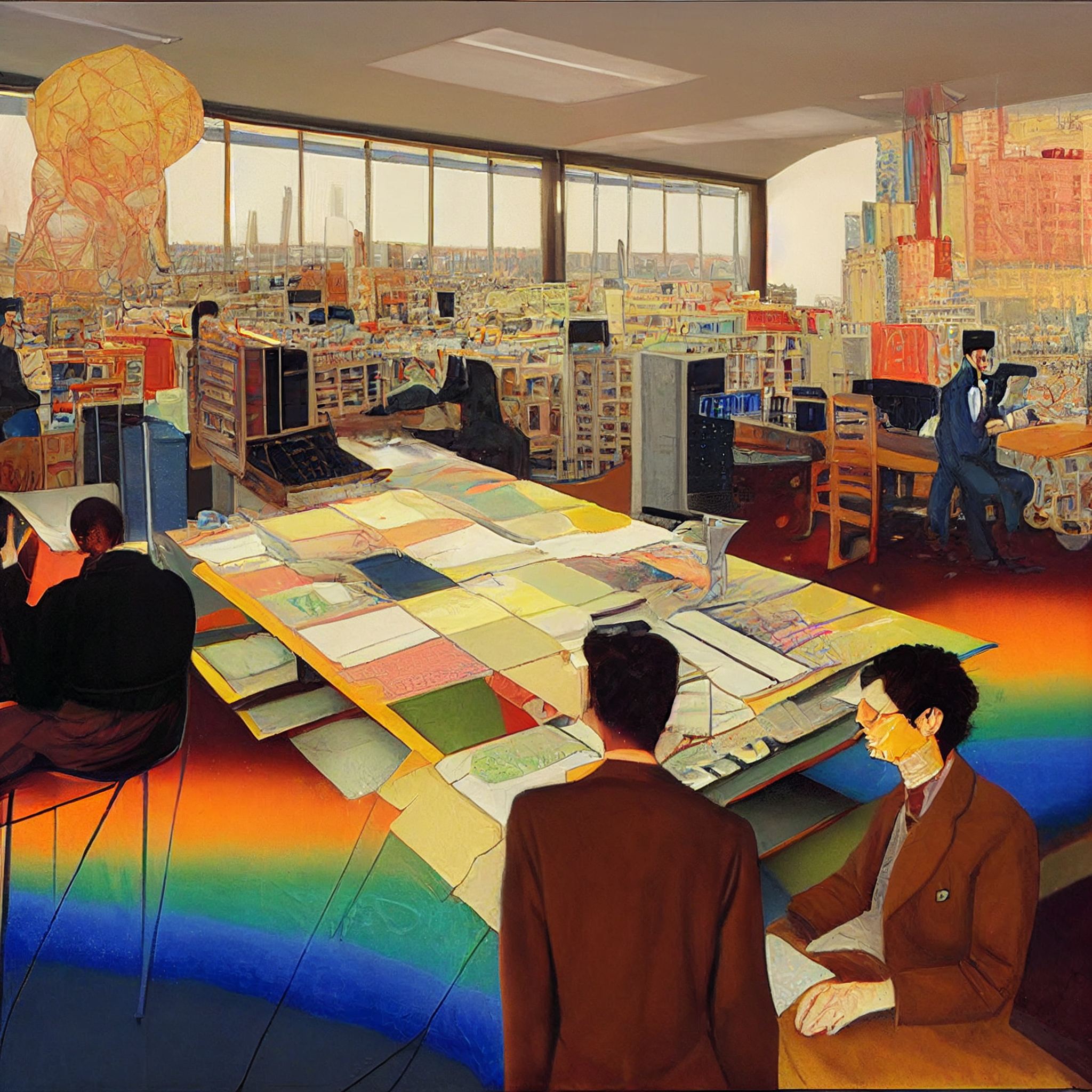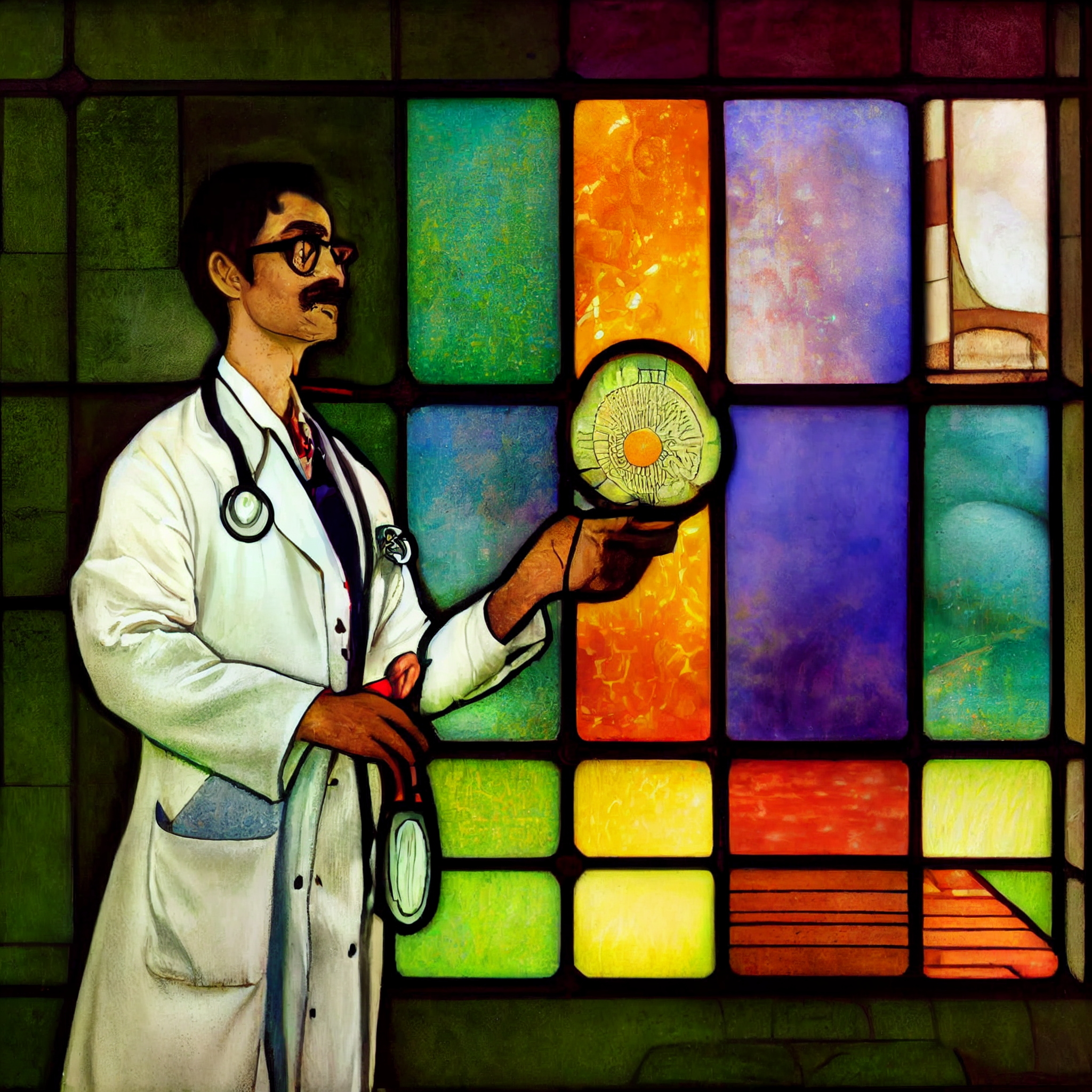The Psychic, the Trickster, and the Afterlife

Investigation of psychic phenomena, including those areas related to the continuity of consciousness after death, continues to be shunned by the mainstream. It is not a subject taken seriously at most universities. The New York Times and The New Yorker don’t investigate it. Yet many kinds of psychic, paranormal or Psi phenomena are commonly accepted by people I know across the world. These people tend to be educated and sophisticated. Many come from elite strata of society. They actively explore various forms of meditation, metaphysics, and esoteric healing practices. Many also work with visionary plants, or entheogens.
A schism runs through our civilization. The establishment still rejects psychic and supernatural phenomena, including evidence for the continuity of consciousness after death, as either delusional or peripheral, ignoring masses of scientific studies and anecdotal evidence. At the same time, many people know the reality and importance of psychic phenomena through experience. Why can’t we heal this divide?
In The Trickster and the Paranormal, George Hansen links psychic phenomena to the trickster archetype from world mythology. Found in legends around the world, tricksters are iconoclastic, destructive figures who destabilize and overturn systems and hierarchies. Our society represses psychic abilities or “Psi” because it is inherently destabilizing: "Psi, the paranormal, and the supernatural are fundamentally linked to destructuring, change, transition, disorder, marginality, the ephemeral, fluidity, ambiguity, and blurring of boundaries,” he writes. “In contrast, the phenomena are repressed or excluded with order, structure, routine, stasis, regularity, precision, rigidity, and clear demarcation."
Hansen believes that "deception and irrationality" are intrinsic to Psi phenomena and "subtle but pervasive pressures.... conspire to keep the paranormal marginalized and scientific investigation at a minimum." This is not a result of consciously orchestrated conspiracies, but arises innately from the nature of Psi phenomena itself, which "interacts with our physical world, with our thoughts, and with our social institutions." Hansen warns that psychic phenomena “are not to be tamed by mere logic and rationality, and attempts to do so are doomed to failure.” He believes there is something intrinsic to this area which blocks empirical investigation.
In Authors of the Impossible, Jeffrey Kripal defines “the psychical” as “the sacred in transition from a traditional religious register into a modern scientific one.” While our society has not managed this yet, it is possible for complex societies to integrate investigation of psychic phenomena and continuity after death into enduring social structures. For instance, Indo-Tibetan Buddhism has a place for psychic and supernatural manifestations of “the sacred.” Their metaphysical perspective, I will argue, is not based on faith, like Western religions, but on phenomenological investigation combined with dialectical reasoning.
Modern technological society treats psychic phenomena — as well as any evidence suggesting continuity of consciousness after death — as a threat to its beliefs and worldview. This is because our institutions cling to reductive materialism, even though the discoveries of 20th Century physics make this worldview obsolete. Psychic phenomena, including evidence for continuity after death, will continue to be suppressed, ignored, and shunned until we overcome reductive materialism. This requires a new philosophical understanding and an expansion of the scientific paradigm.
“Civilization is the shadow cast by man’s evolving consciousness,” noted author Gerald Heard. Our civilization needs a paradigm shift in how we understand the nature of reality, because we are currently lagging behind our evolutionary potential. This shift will inevitably transform our perspective not only on life but also on death and what comes after it.

As Frederic Myers wrote in Human Personality and the Survival of Bodily Death (1903), his opus on this topic: “The conclusions to which our evidence points are not such as can be discussed or dismissed as a mere matter of speculative curiosity. They affect every belief, every faculty, every hope and aim of man.” This remains true today.
Paradigm shifts are destabilizing to the prevailing social order. This is also why the study of subjects such as telepathy and the continuity of consciousness after death remain marginalized, ridiculed, and blocked by institutional inertia. The leaders of the establishment have dedicated their long careers to propping up the flawed materialist ideology. It is too late and too embarrassing for them to backtrack. Also, as miserable as it is to cling to nihilism, the masses have become used to it, comfortable with this particular misery. It seems too painful, now, to break with the accepted orthodoxy, too disconcerting to admit the universe may have more dimensions and we might even possess something like a soul and spirit that exists beyond this life.
It took seven decades for post-industrial society to begin to assimilate the psychedelic experience. This only became possible when science showed its therapeutic value while minimizing or ignoring, as much as possible, the psychic and paranormal content common to these experiences. But the potential for psychedelics to help catalyze social transformation goes far beyond personal psychotherapy.
As the visionary philosopher Terence McKenna put it, with his usual rhetorical gusto:
Our institutions, our epistemologies are bankrupt and exhausted; we must start anew and hope that with the help of shamanically-inspired personalities, we can cultivate this ancient mystery once again. The Logos can be unleashed, and the voice that spoke to Plato and Parmenides and Heraclitus can speak again in the minds of modern people. When it does, the alienation will be ended because we will have become the alien. This is the promise that is held out; it may seem to some a nightmare vision, but all historical changes of immense magnitude have a charged emotional quality. They propel people into a completely new world.
Whether it takes decades or centuries, the paradigm shift we are undergoing is far more significant than the one sparked by Copernicus and Galileo, who removed the Earth — and with it, Man — from the center of the Cosmos. The new paradigm restores humanity’s centrality, dignity, and importance, but in a different way. A new understanding that reintegrates both the psychic and sacred within a scientific framework has the capacity to infuse people’s lives with the meaning that materialism and nihilism robbed from them.
Once commonly understood and collectively accepted, the new worldview will bring great benefits. It will give people a new sense of purpose. Once we understand our personal lives as part of a greater continuum — part of the evolution of human, planetary, and even cosmic consciousness, where we as individuals undergo cycles of reincarnation — our priorities as a species will change. Overcoming obsolete forms of competition while facing an ecological emergency, we might rapidly evolve into a symbiotic species, partnering with the Earth’s living systems.
Many different kinds of evidence strongly indicate the continuity of some form of consciousness and individual identity beyond physical death. These include startling examples of mediumship, evidence from NDEs, out-of-body experience, hypnotic past life regression, telephone calls received from the dead via the bizarre phenomenon of Instrumental Trans-Communication (ITC), apparitions of the deceased, as well as spontaneous past-life recall in early childhood, which has been carefully studied. Much of this research is quite familiar and well-known to those in the field. In what follows, I am going to presume a level of familiarity with this body of evidence, as well as the various arguments around it.

Many books seek to demonstrate the continuity of some form of individual consciousness after physical death: Myer's Human Personality and Its Survival of Bodily Death, Eben Alexander’s Proof of Heaven, Consciousness Beyond Life by Pim Van Lonnel, Journey of Souls by Michael Newton, Science and the Akashic Record by Ervin Laszlo, Kenneth Ring’s Lessons from the Light, Raymond Moody’s Life After Life, Gary Schwartz's The After Life Experiments, Chris Carter’s Science and the Afterlife Experience, Colin Wilson’s Afterlife, Ian Stevenson’s Reincarnation and Biology to name just a few. In these books you find extensive first-person accounts of NDEs, data from hypnotherapy sessions exploring past lives as well as apparent revelations from the period between lives, communication from the deceased via mediums, and research into spontaneous past life recall in early childhood. In many cases, the authors make every effort to convince the doubters — yet the ideological divide remains.
In 7 Reasons to Believe in the Afterlife, typical of the genre, Dr Jean-Jacques Charbonier lays out well-reasoned evidence-based arguments to make his case, but ends on a note of frustration:
According to skeptics and detractors, the existence of a life after this life, and therefore of a hereafter, has not been scientifically proven because for them the experience of an NDE is a phenomenon that is observable only by those undergoing it. Coupled with this, what people who have undergone an NDE tell us about their experience is, of course, not reproducible in a laboratory or measurable by equipment designed for this purpose. … Since these two conditions of being reproducible and measurable — which are deemed to be essential for a proof to be “scientific”— are missing, the hereafter therefore is not about to be recognized as a scientific reality.
Reasoning in this way, scientific thought becomes frighteningly reductionist in authenticating what belongs to the realm of the real.
We never know with absolute certainty what is true. William James noted, "A concrete test of what is really true has never been agreed on." In an absolute sense, you can never know whether anyone except yourself possesses consciousness or self-awareness at all. It is possible, as Descartes realized centuries ago, that you are the only point of consciousness living in a tremendously advanced simulation — that every other person is a kind of simulacrum or AI, built out of code designed to pass the Turing Test. In fact, the Simulation Hypothesis is increasingly popular among physicists and engineers.
All you know is your own consciousness. You have not experienced physical death in this body. Therefore, there will never be an absolute convincing proof of whether or not, or how, this consciousness continues, until the event itself transpires — just as there is no entirely convincing proof that other people possess awareness as you do. We accept that other people are conscious due to logical inference. If the same level of logical inference is applied to the evidence for continuity of consciousness after death, the data becomes convincing, for those who investigate it deeply.

Among the most thorough refutations of the skeptic’s arguments is Chris Carter’s trilogy, Science and Psychic Phenomena, Science and the Near-Death Experience, and Science and the Afterlife. A trained philosopher, Carter makes a careful, comprehensive review that reveals the logical inconsistencies and shoddy tactics often used by skeptics to dismiss any evidence for the continuity of consciousness after bodily death, as well as for any form of ESP or other psychic phenomena. He dives deep into specific examples of mediumship, NDEs, apparitions of the dead, and past life recall in early childhood. He reviews the various responses that have been made by skeptics, and offers persuasive counter-arguments.
It makes no sense in an essay of this length to go over the evidence and arguments, with all of their subtle nuances, one more time. It won’t help to comb through, yet again, the examples of “white crow” mediums who, while channeling the deceased, spoke in languages they didn’t know, played grandmaster level chess, embodied the personality of the dead in a way that was subjectively convincing to their closest friends and family, or revealed secret information known only to the deceased and their innermost circle. It hardly makes sense to try to refute the arguments that mediumship is always either based in trickery or that mediums access some form of “super-ESP.” These arguments have already been addressed repeatedly. It also isn’t worth the effort to go through specific cases of past-life recall in early childhood, refuting skeptics who consider these to be frauds, done for monetary gain or celebrity. These arguments can go on forever.
The obstacle that prevents our society from accepting the copious evidence that has already been compiled is not any lack of diligence on the part of researchers. What is missing is a shared framework of understanding, an overarching paradigm which fits the evidence: “In addition to examining the evidence, it is necessary to critically examine the different philosophic and scientific assumptions underlying acceptance and rejection of the evidence,” Carter writes in Science and Psychic Phenomena. “It is these assumptions that are in dispute, more so than the evidence itself. That a mass of favorable evidence exists can hardly be disputed if one has taken the trouble to look for it. Whether or not the conclusions to which the evidence seems to point should be accepted depends upon the validity of the skeptical objections and, by implication, of their underlying philosophic and scientific assumptions.”
For scientific materialists, any continuity of consciousness after death is impossible. Hence, they automatically reject all evidence for it. That will continue to be the case until we establish an alternative model which is more viable and fits all of the evidence.
All of the work on the survival of consciousness and all of the amassed evidence on this topic will remain unconvincing to skeptics and doubters without a coherent framework, a philosophical model and set of scientific hypotheses making sense of this area. Whether it takes a year, a decade or a century, the new paradigm must eventually topple, once and for all, reductive materialism from its wobbly throne. Such a philosophical basis can’t contradict science or empiricism. Instead, we must seek to extend the scientific method, rejecting the distortions of reductive materialism in favor of a truly unbiased inquiry.
It was merely a hypothesis of 18th - 20th Century scientific materialism that consciousness was secondary to matter — that consciousness somehow arises out of the physical universe, due to ever-increasing evolutionary complexity. It is equally possible — and, in fact, supported by evidence — that the reverse is true: That the physical or material universe emerges out of consciousness, which can be described as an infinite Plenum or source-field.